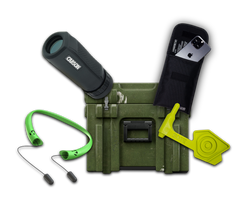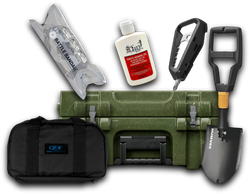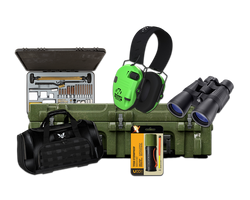How to Adjust a Tactical Belt: A Comprehensive Guide
Table of Contents
- Introduction
- Understanding Tactical Belts
- Choosing the Right Tactical Belt
- How to Adjust Your Tactical Belt
- Common Issues and Solutions
- Tactical Belt Maintenance
- Conclusion
- FAQ
Introduction
Have you ever found yourself struggling with an ill-fitting tactical belt that sags or pinches? Perhaps you've experienced the frustration of trying to adjust your gear on the fly, only to discover that your belt just won’t cooperate. Tactical belts are essential tools for anyone who carries equipment, firearms, or survival gear, but understanding how to properly adjust and wear them can make all the difference in comfort and functionality.
Tactical belts are not merely accessories; they are integral components of your gear setup, designed to provide support, accessibility, and security for various tools and equipment. With the right adjustments, a tactical belt can enhance your mobility, ensure your gear is always within reach, and provide a stable foundation for your loadout. This blog post aims to equip you with the knowledge needed to properly adjust a tactical belt, ensuring that you can maximize its capabilities while minimizing discomfort.
In this comprehensive guide, we will cover the following key aspects:
- Understanding Tactical Belts: What they are and why they matter.
- Choosing the Right Tactical Belt: Factors to consider before purchasing.
- How to Adjust Your Tactical Belt: Step-by-step instructions for achieving the perfect fit.
- Common Issues and Solutions: Troubleshooting common problems with tactical belts.
- Tactical Belt Maintenance: Tips for keeping your belt in top condition.
- Conclusion and Call to Action: Summarizing the importance of a properly adjusted tactical belt.
By the end of this post, you will not only understand how to adjust your tactical belt for optimal comfort and utility, but you will also appreciate the importance of this gear in your overall tactical setup. So, let’s dive in!
Understanding Tactical Belts
Tactical belts are specialized belts designed to carry various items such as firearms, knives, flashlights, and other essential gear. Unlike standard belts, tactical belts are built for durability and rigidity, offering the support needed to carry heavy loads without sagging. They often feature a variety of attachments, including pouches, holsters, and D-rings, allowing for a customizable setup.
Purpose of Tactical Belts
The primary purpose of a tactical belt is to provide a secure platform for carrying gear. This can include:
- Firearms: Ensuring easy access to your sidearm.
- Tools: Keeping essential tools at your fingertips.
- Survival Gear: Carrying items needed for outdoor adventures or emergencies.
- Medical Supplies: Allowing quick access to first aid kits.
Types of Tactical Belts
- EDC (Everyday Carry) Belts: Ideal for casual use, these belts are comfortable and can hold lighter gear.
- Duty Belts: Designed for law enforcement and security personnel, these belts are heavy-duty and can carry significant weight.
- Rigger Belts: Often used in tactical operations, these belts are robust and can be used in emergency situations.
- Light Duty Belts: Lighter and more comfortable, suitable for everyday tasks without heavy gear.
Understanding the type of tactical belt that best suits your needs is critical for effective gear management.
Choosing the Right Tactical Belt
When selecting a tactical belt, several factors should be considered to ensure you find the right fit for your needs.
Material
Tactical belts are predominantly made from two materials: nylon and leather.
- Nylon: Lightweight, quick-drying, and often more flexible, nylon belts are ideal for tactical use. They are less likely to sag and can support various attachments.
- Leather: While more fashionable, leather belts may not offer the same level of durability or adjustability as nylon options.
Rigidity
The rigidity of a tactical belt is essential for its performance. A belt that is too flexible may not support heavy gear, while one that is overly rigid can be uncomfortable. Finding a balance based on the intended use is crucial.
Buckle Type
The buckle on your tactical belt is another important consideration. Common types include:
- Quick-release Buckles: Allow for fast adjustments; ideal for situations requiring rapid removal.
- Snap Buckles: Easy to use but may not offer fine adjustments.
- Loop Buckles: Offer a secure fit but require more effort to adjust.
A strong buckle is essential for a secure fit, especially if you're carrying heavy equipment.
Size and Fit
To ensure a proper fit, measure your waist and consider the belt's width. Most tactical belts come in 1.5-inch or 1.75-inch widths, which typically fit standard belt loops. However, it's essential to check compatibility with your clothing.
How to Adjust Your Tactical Belt
Now that we've established the importance of choosing the right tactical belt, let’s delve into the process of adjusting it for optimal comfort and functionality.
Step 1: Assemble Your Gear
Before adjusting your belt, gather all the gear you plan to carry. This includes your firearm, tools, and any additional items. The weight and arrangement of your gear will influence how you adjust the belt.
Step 2: Position the Belt
- Put on the Belt: Start by threading the belt through your belt loops, ensuring it sits comfortably on your hips.
- Adjust for Positioning: The belt should rest comfortably above your hip bones, not below.
Step 3: Buckle Up
- Buckle the Belt: Secure the buckle according to its design. If you’re using a quick-release buckle, ensure it clicks into place properly.
- Initial Tightening: Pull the end of the belt to tighten it, ensuring it feels snug but not restrictive.
Step 4: Fine-Tune the Fit
- Test the Fit: Take a few moments to move around, ensuring the belt is comfortable. It should not ride up or sag.
- Make Additional Adjustments: If needed, loosen or tighten the belt to achieve the right balance. For quick-release buckles, you can adjust the fit easily without removing the belt completely.
Step 5: Gear Placement
- Balance Your Gear: Ensure that heavier items, like your firearm, are positioned on your dominant side for easy access. Flat items should be placed on your back for comfort.
- Check Accessibility: Make sure all gear is within easy reach and can be accessed quickly when needed.
Step 6: Final Check
Before heading out, do a final check of the belt's fit and your gear's positioning. Ensure that the belt feels secure and that you can move freely without any hindrance.
Common Issues and Solutions
Despite following the correct adjustment process, you may still encounter issues with your tactical belt. Here are some common problems and their solutions:
Problem: Sagging Belt
Solution: Ensure that the belt is properly tightened and that heavier items are positioned correctly. If sagging persists, consider using a more rigid belt or redistributing your gear.
Problem: Discomfort or Pinching
Solution: If your belt feels uncomfortable, it may be too tight or poorly positioned. Loosen the belt slightly or adjust its position on your hips. Additionally, ensure that you are wearing a belt that is appropriate for your body type and the weight you are carrying.
Problem: Difficulty Adjusting
Solution: If you find it challenging to adjust your belt, check the buckle type. Quick-release and snap buckles generally offer easier adjustment compared to loop buckles. If your belt lacks adjustability, consider investing in a more versatile design.
Tactical Belt Maintenance
To ensure your tactical belt remains in optimal condition, regular maintenance is essential. Here are some tips:
Cleaning
- Nylon Belts: These can usually be cleaned with soap and water. Allow them to air dry completely to prevent any mildew.
- Leather Belts: Use a leather cleaner and conditioner to maintain suppleness and prevent cracking.
Inspection
Regularly inspect your belt for signs of wear and tear. Check for fraying edges, weakened buckles, and any damage that could compromise its functionality.
Storage
When not in use, store your belt in a cool, dry place, avoiding extreme temperatures and humidity that could damage the materials.
Conclusion
A properly adjusted tactical belt is more than just a piece of gear; it’s an essential part of your tactical setup that enhances your ability to carry and access critical equipment. By understanding how to choose, adjust, and maintain your tactical belt, you can ensure it meets your specific needs and supports your activities effectively.
If you're ready to elevate your tactical gear, consider exploring the Crate Club subscription services, which provide curated tactical gear delivered to your doorstep each month. You can choose from four tiers that cater to different levels of experience and need, ensuring you always have the right tools for the job.
For those looking to purchase high-quality tactical gear right away, check out the Crate Club Shop, where you can find a variety of tactical belts and other essential gear to enhance your preparedness.
FAQ
Q: How tight should my tactical belt be?
A: Your tactical belt should be snug enough to hold your gear securely but not so tight that it restricts movement or causes discomfort. A good rule of thumb is to ensure you can fit one finger between the belt and your body.
Q: Can I wear a tactical belt with regular pants?
A: Yes, most tactical belts are designed to fit standard belt loops, making them compatible with regular pants. Just ensure you choose a belt that matches the width of your loops.
Q: How do I know if my tactical belt is the right size?
A: Measure your waist with a soft tape measure and compare it to the sizing chart provided by the manufacturer. Always opt for a belt that offers some adjustability for a perfect fit.
Q: What gear should I carry on my tactical belt?
A: This depends on your needs, but essential items often include a firearm, spare magazines, a flashlight, a multi-tool, and medical supplies. Ensure that each item is easily accessible and balanced on the belt.
Q: Are tactical belts waterproof?
A: Many nylon tactical belts are water-resistant, but they are not entirely waterproof. If you need a belt that can withstand extreme moisture, look for those specifically designed for such conditions.
Share this article



